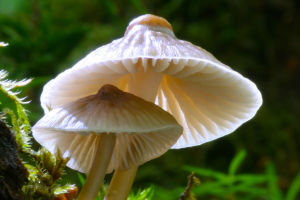Mushrooms are a favorite food for everyone. They can be fried or stewed. There are many types of mushrooms, although we often collectively call them mushrooms, but different types of mushrooms have different characteristics, so they have different tastes.
Some mushrooms are even poisonous, so we should have some necessary types of mushrooms. learn. So today, let’s learn about the types of mushrooms and their nutritional value.
First, the types of mushrooms
1. Shiitake mushrooms. Shiitake mushrooms are one of the most common types of mushrooms. They have a strong taste and are suitable for roasting and oil stewing. Stewed pork ribs with mushrooms have a good taste.
2. Straw mushrooms. Straw mushrooms are rich in vitamin C, suitable for stir-frying. In addition, if you fry directly in this way, the vitamin C in the straw mushroom is difficult to be destroyed, and the straw mushroom tastes very good, and it is also suitable for soup or direct frying.
3. Flammulina velutipes. Flammulina is also a familiar ingredient. It tastes delicious. Most people like to use it as a hot pot material. In addition, people with cold body should not eat too many enoki mushrooms.
4. Tea tree mushroom, king oyster mushroom, pocket mushroom. These three kinds of mushrooms have a sweet taste and are suitable for stir-frying. Usually everyone likes to use it with pork stir fry, it tastes very good.
5. Hericium erinaceus. Hericium erinaceus can be boiled at high temperature, but the mushroom food is mainly made by stir-frying or stewing, so as not to lose the original taste of mushrooms. The mushrooms we usually eat are the above-mentioned mushrooms, and the wild mushrooms that can be eaten include porcini mushrooms, morels, red mushrooms and so on.
Second, the efficacy and role of mushrooms
1. Increase appetite. Mushrooms have a unique fragrance, especially after special cooking, the taste is even worse, it is very suitable for patients with poor appetite, and proper consumption in daily life can increase appetite.
2. Laxative detoxification. Mushrooms contain a lot of crude fiber, semi-fiber and lignin and other substances that are difficult to digest in the gastrointestinal tract. After eating, they can not only absorb a lot of water and expand, increase the humidity of food residues, but also stimulate gastrointestinal motility, and have a laxative effect. It is very suitable for intestinal patients such as constipation and intestinal cancer.
3. Sedative and analgesic. Mushrooms contain analgesic and sedative ingredients. Many medicines are made of fungi. Many mushrooms contain this active ingredient. Edible mushrooms also have a sedative effect, and the effect can even replace morphine.
4. Relieving cough and resolving phlegm. Some mushrooms contain antitussive and phlegm-relieving active substances. Among them, Ganoderma lucidum and shiitake mushrooms have the best effect. In fact, most edible mushrooms have antitussive effects. Eating some mushrooms when coughing can play an auxiliary therapeutic effect.
However, it is best not to eat mushrooms for people with weak spleen and stomach. The content of cellulose in mushrooms is relatively high. If the digestive function is relatively weak, eating too much mushrooms will easily lead to aggravating the burden on the stomach and intestines, as well as skin diseases. , patients with dampness disease, do not eat mushrooms, patients with gout, can not eat mushrooms, otherwise it will aggravate the disease.


